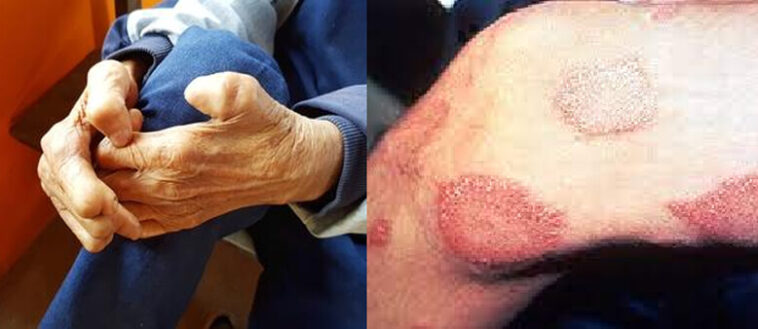Understanding Leprosy (Hansen’s disease) in Florida: Understanding the Infection
Leprosy, also known as Hansen’s disease, is an age-old chronic contamination that causes pores and skin lesions, nerve harm, and disability if untreated. Recently, Florida has skilled an unusual surge in leprosy instances focused closely inside the region. This article will provide an in-depth observe leprosy, the reasons in the back of Florida’s growing caseload, prevention methods, and the want for public consciousness and action.
What is Leprosy (Hansen’s disease) and How is it Spread?
Leprosy is as a result of a bacterium called Mycobacterium lеpraе, which multiplies very slowly. It in general affects the pores and skin, peripheral nerves, top respiration tract, and eyes if left unchecked.
The disease spreads via airborne droplets from the nose and mouth, and through close contact. Most experts consider it difficult to transmit. An estimated 95% of people are naturally immune. Long incubation intervals of up to five years are not unusual earlier than symptoms take place.
While leprosy can purpose nerve harm and disfigurement, it is curable with right detection and antibiotic remedy. But stigma around the condition has been a constant barrier.
Hansen’s disease Through History and Its Stigma
Leprosy is one of humanity’s oldest diseases, with cases documented as far back as 600 BC. Historical societies often ostracized those with visible symptoms, forcing them into colonies or leprosaria.
The stigmatization and myth of leprosy patients being highly contagious persists today, despite medical advances disproving that notion. Reducing misconceptions through education remains an ongoing need.
Modern treatments have made leprosy preventable and non-communicable. But discrimination still impacts reported cases and early intervention. Awareness campaigns emphasize that leprosy is fully curable, not highly contagious, and should not incite prejudice against those affected.
Recent Leprosy Caseload Trends in Florida
Over the last decade, reported leprosy cases in Florida have climbed at an unusual rate:
- In 2010, only 13 cases were reported statewide.
- By 2020, 139 cases were recorded in Florida, a over 970% increase.
- The 139 Florida cases accounted for 81% of all leprosy cases in the U.S.
- Brevard, Broward, Duval, Hillsborough, Lee, Marion, Miami-Dade, Orange, and Palm Beach counties saw concentrated clusters.
- Rates among children also rose in Florida, indicating active transmission.
These statistics deviate from national trends, raising concerns about factors driving localized spread.
Potential Causes of Rising Leprosy Cases in Florida
Health experts are investigating potential catalysts behind leprosy’s resurgence in Florida:
- Increased international travel and immigration from leprosy-endemic nations
- Warm climate favoring bacterial spread
- Pockets of poverty with reduced access to healthcare
- Weakened immunity in aging population
- Close contact in crowded urban areas like Miami
- Delayed diagnosis due to social stigma
- Insufficient public health resources for leprosy prevention
- Migration of carriers from high-prevalence regions
Further research aims to clarify the influencing variables at play in order to target solutions.
At-Risk Demographics for Leprosy Infection
While anyone can contract leprosy, certain demographics face higher likelihood:
- People in close contact with untreated leprosy cases
- Individuals with weaker immune systems
- Those living in poverty-stricken conditions
- Patients with other immunosuppressing illnesses
- Residents of overcrowded communities
- Recent travelers to endemic areas
- Certain ethnic populations possibly more genetically susceptible
Understanding risk factors aids early detection in vulnerable groups before complications arise.
Common Symptoms and Diagnosis of Leprosy
Hallmark symptoms of leprosy infection include:
- Skin lesions – Patches, nodules, rashes, thickenings
- Nerve pain or numbness
- Sensory loss in extremities
- Muscle weakness
- Eye issues – Dryness, reduced blinking
- Nasal congestion or nosebleeds
- Testicular pain or swelling
Diagnosis involves skin biopsies, smears, and specialist examination to identify bacterial presence and nerve involvement. Early diagnosis minimizes advanced progression.
Classifications of Hansen’s disease for Treatment Purposes
Leprosy manifests in varied forms that dictate treatment approaches:
Paucibacillary Leprosy
- Milder disease with few skin lesions
- Localized infection site
- Lower bacterial levels
- Treated with 6-12 months of antibiotics
Multibacillary Leprosy
- Advanced disease with numerous lesions
- Widespread infection
- Higher bacterial load
- Treated with 12-24 months of antibiotic combinations
Primary Progressive Leprosy
- Severe nerve damage early on
- Permanent numbness or paralysis
- Emergency treatment needed
Classifying cases appropriately ensures rapid and effective treatment.
Standard Medical Treatments
Most leprosy infections today are cured using advanced multi drug antibiotic therapy over months. Treatment regimens include:
- Rifampin: Bactericidal antibiotic killing mycobacteria
- Dapsone: Bacteriostatic antibiotic halting multiplication
- Clofazimine: Anti-inflammatory antibiotic
- Ofloxacin and Minocycline: Second-line bactericidal drugs
- Prednisone: Corticosteroid for nerve pain and inflammation
Stopping treatment early can lead to relapse and antibiotic resistance. But completed regimens fully eliminate infections and transmission risk in most cases. Supportive nerve pain and wound care may also be part of treatment.
Physical Disabilities Caused by Advanced Disease
Without treatment, leprosy bacteria damage peripheral nerves over time, causing debilitating physical problems:
- Sensory loss: Numbness in hands and feet from damaged nerves
- Motor deficits: Muscle weakness leading to clasped hands or foot drop
- Ulcers: Loss of feeling leads to unnoticed wounds becoming severe
- Limb paralysis: Hands, feet become claw-like and immovable
- Blindness: Irritation and lags cause corneal scarring
- Facial disfigurement: Earlobe decay, nasal cartilage collapse
These advanced effects reinforce the need for early detection and treatment.
Reducing Hansen’s disease Stigma to Encourage Reporting
A major barrier continues to be fear of disclosing leprosy symptoms due to stigma. More awareness and public education can help reduce misconceptions. Key messages include:
- Leprosy is curable and not highly contagious
- Modern treatment prevents disability if accessed early
- Most people have natural immunity and won’t contract it
- Transmission requires intensive, prolonged contact
- Symptoms should be discussed, not hidden in shame
- Those affected can live normal lives when cured
- Compassion for marginalized groups is needed
Changing attitudes helps minimize discrimination that dissuades people from seeking care.
Ways Individuals Can Reduce Leprosy Risk
While leprosy ultimately requires public health initiatives, individuals can also take protective steps:
- Practice good hygiene: Wash hands, avoid touching eyes and mouth, cover coughs.
- Avoid prolonged contact with untreated cases: Brief encounters are low-risk.
- Boost immunity: Get sufficient sleep, nutrition, exercise, sunlight.
- Get early treatment for symptoms: Don’t delay seeing a doctor.
- Examine skin: Look for unusual lesions, seek expert input.
- Support awareness and education: Speak out against harmful stigma.
Personal precautions and reduced stigma together aid prevention.
The Need for Expanded Hansen’s disease Screening
Health agencies advise expanded Hansen’s disease screening in at-risk areas of Florida given rising caseloads. Screenings can detect cases before major progression.
Dermatology and neurology clinics should be alert for early symptoms. Public healthcare workers may need Hansen’s disease assessment training to spot signs. Proactive monitoring of vulnerable groups is prudent.
Future funding also needs to expand for Hansen’s disease outreach and investigation of transmission hotspots. More rigorous control is urgently required.
Ongoing Hansen’s disease Research Provides Hope
Ongoing research aims to accelerate the end of leprosy worldwide:
- Developing tools to measure leprosy transmission intensity
- Working on vaccines to prevent infection
- Using genomics to understand disease mechanisms
- Studying epigenetic changes in bacteria to improve treatments
- Identifying chemical compounds that block nerve damage
- Assessing combination chemotherapies to shorten treatment
- Creating comprehensive data resources for analysis
Scientific breakthroughs can overcome this ancient scourge.
Conclusion: A Call to Action Against Leprosy
The unexpected rise of Hansen’s disease cases concentrated in Florida warrants decisive public health action and community partnership. Policymakers must dedicate resources to screenings, outreach, faster diagnosis, and care programs in at-risk regions. Healthcare providers require training to identify early cases that are most contagious. Individuals should get informed, reduce stigma, and access help rapidly if exhibiting symptoms. Only through proactive efforts can this preventable disease be controlled and eliminated. Florida stands at a pivotal juncture to confront the pressing Hansen’s disease situation through compassion, knowledge and science-based solutions.
FAQ’s
What is leprosy?
Leprosy, also called Hansen’s disease, is an infection caused by bacteria (Mycobacterium lеpraе) that damages nerves and skin if untreated. It is curable with antibiotics.
Why is it increasing in Florida?
Cases have risen from 13 in 2010 to 139 in 2020, likely due to factors like travel, climate, poverty, and urban crowding enabling spread plus stigma delaying treatment.
How is leprosy transmitted?
It spreads through airborne droplets from the nose/mouth and close repeated contact with untreated cases. Most people have natural immunity that prevents transmission.
What are the symptoms?
Early signs are numbness, skin lesions, nerve pain. It is possible to come to be blind, paralyzed, and disfigured without treatment.
What is the high-quality way to diagnose leprosy?
Doctors diagnose leprosy by means of analyzing pores and skin biopsies and smears below the microscope to discover the microorganism. Catching it early prevents progression.
How is it treated?
Leprosy is treated with 6-24 months of multi drug antibiotic therapy depending on the type. Supportive wound and nerve pain care may also be needed.
How can we reduce stigma?
Education, awareness, and speaking out against outdated misconceptions about leprosy being highly contagious or disabling if treated early and properly.
So in summary, Florida’s leprosy increase requires urgent public health response to expand screenings, speed diagnosis, and deliver care to prevent disabilities and reduce transmissions.
To find out more about the hottest topics in Nutrition and Health, click here.





